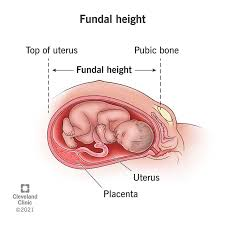Which of the following is the priority nursing action for a client at 33 weeks of gestation with a diagnosis of placenta previa?
Insert an IV catheter.
Monitor vaginal bleeding.
Apply an external fetal monitor.
Administer glucocorticoids.
The Correct Answer is B
Choice A reason:
Inserting an IV catheter is a standard procedure in many hospital admissions and can be necessary for administering medications and fluids. However, it is not the immediate priority in the case of placenta previa. Placenta previa is a condition where the placenta covers the cervix, and the main risk associated with it is bleeding.
Choice B reason:
Monitoring vaginal bleeding is the priority nursing action for a client with placenta previa. This condition can lead to significant bleeding, which can be life-threatening for both the mother and the fetus. The nurse must assess the amount, color, and duration of any bleeding to make timely decisions regarding the need for further medical intervention or potential delivery if the bleeding is severe.
Choice C reason:
Applying an external fetal monitor is important to assess the fetus's well-being, especially if there is vaginal bleeding or other complications. However, it is not the first action to take. The immediate concern with placenta previa is the risk of hemorrhage, which can compromise the oxygen supply to the fetus, making monitoring maternal bleeding a higher priority.
Choice D reason:
Administering glucocorticoids may be indicated to accelerate fetal lung maturity if preterm delivery is anticipated. While this is an important consideration in the management of placenta previa, especially if there is a risk of preterm birth, it is not the first line of action. The initial focus should be on assessing and controlling any bleeding to stabilize the mother's condition.
Nursing Test Bank
Naxlex Comprehensive Predictor Exams
Related Questions
Correct Answer is C
Explanation
Choice a Reason: Encourage the client to move to the left lateral position
Moving to the left lateral position is often recommended to improve circulation and prevent compression of the vena cava by the uterus in a pregnant client. However, in the case of a boggy fundus postpartum, this position is not the primary action to be taken.
Choice b Reason: Ask the client to rate her pain
While assessing pain is important in the postpartum period, it is not the immediate action required for a boggy fundus. A boggy fundus indicates that the uterus is not contracting properly, which can lead to excessive bleeding.
Choice c Reason: Assist the client to the bathroom to void
A boggy fundus that is displaced to the right often indicates a full bladder, which can prevent the uterus from contracting effectively. Assisting the client to the bathroom to void can help the uterus contract and reduce the risk of hemorrhage.
Choice d Reason: Encourage the client to perform Kegel exercises
Kegel exercises are beneficial for strengthening the pelvic floor muscles after childbirth. However, they are not the immediate action to take for a boggy fundus postpartum

Correct Answer is B
Explanation
The correct answer is choice B. At the level of the umbilicus.
Choice A rationale:
The fundus is typically not found 2 cm above the umbilicus 12 hours postpartum. This position is more common immediately after delivery or in cases of uterine atony or retained placental fragments.
Choice B rationale:
At 12 hours postpartum, the uterine fundus is expected to be at the level of the umbilicus. This indicates normal involution of the uterus, where it contracts and shrinks back to its pre-pregnancy size.
Choice C rationale:
One fingerbreadth above the symphysis pubis is not a typical position for the fundus 12 hours after delivery. This position is more likely several days postpartum as the uterus continues to involute.
Choice D rationale:
The fundus being to the right of the umbilicus may indicate a full bladder, which can push the uterus to one side. This is not a normal finding 12 hours postpartum and would require intervention to empty the bladder.
: https://bchsfoutreach.ucsf.edu/sites/bchsfoutreach.ucsf.edu/files/handouts/Washington%20Hospital%20Postpartum%204-2018.pdf : https://nursekey.com/fundal-palpation-postpartum/
Whether you are a student looking to ace your exams or a practicing nurse seeking to enhance your expertise , our nursing education contents will empower you with the confidence and competence to make a difference in the lives of patients and become a respected leader in the healthcare field.
Visit Naxlex, invest in your future and unlock endless possibilities with our unparalleled nursing education contents today
Report Wrong Answer on the Current Question
Do you disagree with the answer? If yes, what is your expected answer? Explain.
Kindly be descriptive with the issue you are facing.
